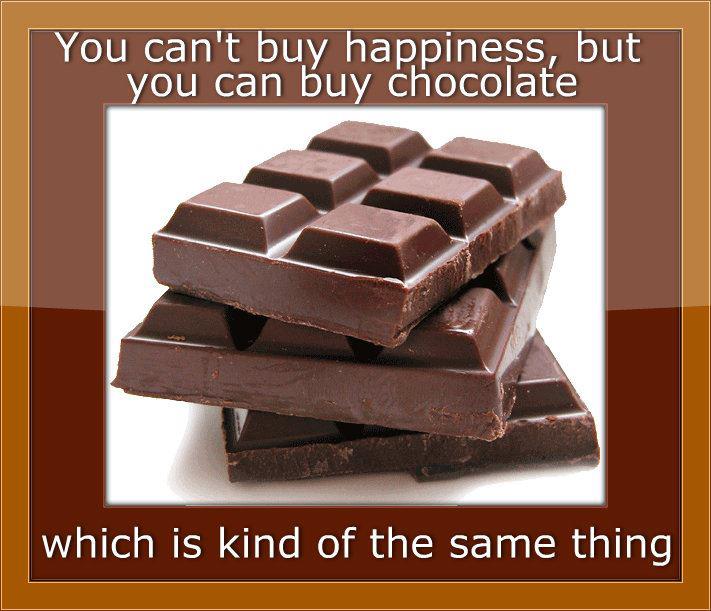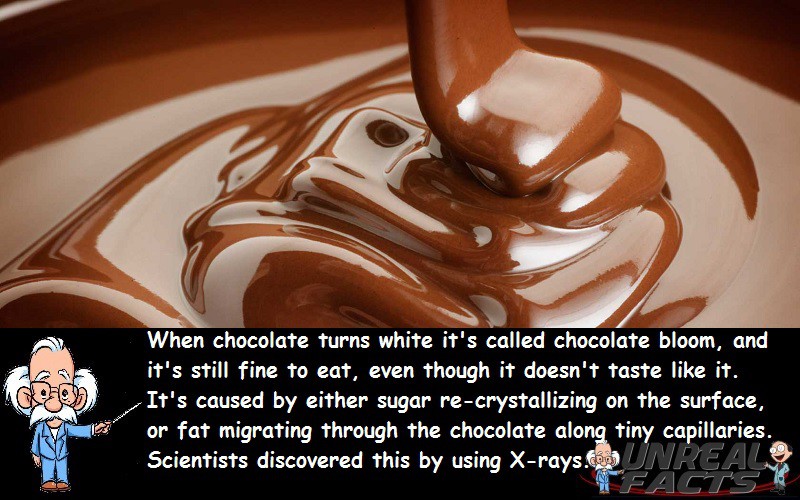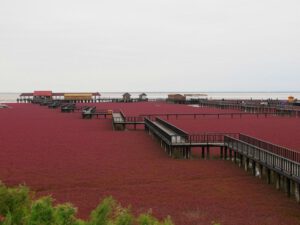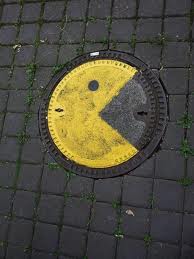Now for a question that has been bugging me, and quite possibly every chocolate lover around the world for quite some time. Why does chocolate go white? You know what I mean, right? What would appear to be a perfectly good chocolate bar while still contained in its wrapper turns out to be a somewhat pale in its complexion. What should have been a beautiful looking, chocolaty brown treat ended up being a rather unappetizing looking white bar that more closely resembled a piece of white dog poop. This completely disturbing transformation left me wondering, why does chocolate go white?
I’ll be the first to admit that when I discover a piece of chocolate has gone white I generally discard of it. I mean, come on. It looks moldy, and it can’t possibly be healthy for you (put this into context, chocolate will take longer to kill you than mold). But the thing about this pale skinned, poor excuse for a confectionery treat is that it is perfectly fine to eat. This is despite the fact that it is trying its darndest to persuade you to go for the apple in the fruit bowl instead. So would you like to know what this off putting white stuff is? It’s called bloom.
When you think of bloom most people think of flowers, as in flowers blooming. As you may know, when a flower blooms the petals flourish outward, creating the sometimes stunning flowers that many a woman adores. This is surprisingly a similar thing that is happening in a piece of chocolate, from two different possible sources.
The first one we will talk about is sugar bloom. Sugar bloom in chocolate happens when the sugar inside the chocolate moves towards the outside. All chocolate contains sugar, but it is so fine that we are unable to detect its texture in our mouths. Because of the state of chocolate, and how fine the sugar is, it is normally in a dissolved state. As the chocolate dries out the sugar that is normally confined within the bar re-crystallizes and becomes clearly visible on the surface of the bar as a white powdery substance. And we all know that sugar is not only edible, but also delicious.
The second reason that chocolate goes white is from fat bloom, which admittedly sounds somewhat less enticing. Whereas the sugar bloom is caused by the bar drying out, the causes for fat bloom vary. Anything from incorrect storage to changes in temperature can cause a catastrophic outbreak of fat bloom. When this happens it will look decidedly ordinary, and be as joyous to eat as Brussels sprouts. Instead of being smooth in texture, it will be either soft or crumbly.
So while science has known for a while why chocolate turns white, it wasn’t until fairly recently that they knew how it happens, and it took some scientists using expensive equipment to solve this conundrum.
The scientists used X-rays to observe what was going on. Yeah X-rays. The same rays that are used to look at bones in our bodies, and cost a pretty penny for the photo opportunity. What they discovered was that the fat within the chocolate moves along tiny capillaries until it reaches the surface. So a piece of chocolate that has been stored correctly and at the right temperature should prolong the process of the fat migration.
Science also had a solution to the problem, although it’s not all that scientific. They suggested that the manufacturers should try to reduce the porosity of the chocolate, and when storing it the temperature should be cool and not cold. An ideal temperature is 18 degrees Celsius.
SOURCES









